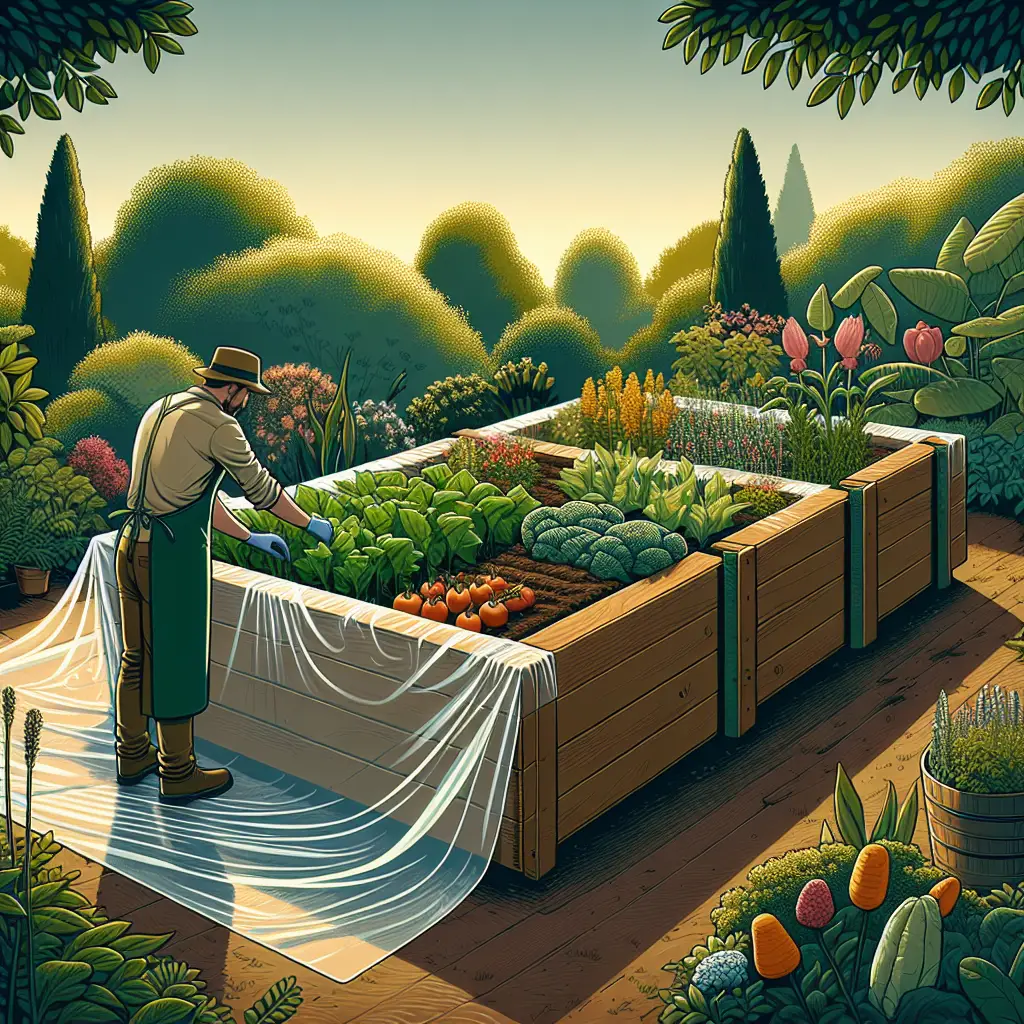Title: Can You Line a Raised Garden Bed With Plastic?
Introduction:
When it comes to perfecting the art of home gardening, raised garden beds are a popular choice for green thumbs everywhere. They offer numerous benefits, such as improved soil conditions, better drainage, and a barrier against pests. But one question that often arises is whether it is advisable to line a raised garden bed with plastic. In this article, we’ll delve into the pros and cons of using plastic liners and provide you with the information you need to make the best decision for your garden’s longevity and productivity.
Subheading: The Advantages of Using Plastic Liners in Raised Garden Beds
There are several reasons why gardeners might choose to line their raised beds with plastic. Firstly, a plastic liner can be a formidable barrier against burrowing pests such as voles and gophers, who could otherwise wreak havoc on your plants’ roots. Another advantage of plastic liners is their ability to prevent the loss of soil and nutrients through the bottom of the bed, which can be especially useful if the bed is set up on a patio or deck.
Furthermore, according to the University of Maryland Extension, using a plastic liner can help to reduce the amount of water needed for your plants, as it minimizes the evaporation of moisture from the soil. This can be particularly advantageous in regions where water conservation is a concern.
Subheading: The Potential Drawbacks of Plastic Liners
Despite its advantages, the decision to use plastic in your raised garden bed is not without potential downsides. For example, concerns have been raised about the possibility of chemicals leaching from certain plastics into the soil, especially when exposed to sunlight. The National Gardening Association provides some insights into selecting the right type of plastic to minimize these risks, suggesting that gardeners opt for food-safe, UV-stabilized polyethylene.
Another drawback to consider is that plastic liners can restrict drainage if not properly installed. Poor drainage can lead to waterlogged soil, which is detrimental to plant health. To avoid this issue, it’s essential to incorporate holes in the liner to facilitate proper drainage.
Subheading: Best Practices for Lining Your Raised Garden Bed
If you decide to line your raised garden bed with plastic, there are best practices to follow. Here are a few tips to ensure success:
- Select the Right Plastic: Choose food-safe, UV-stabilized plastic to reduce the risk of leaching chemicals.
-
Ensure Proper Drainage: Puncture the plastic liner with holes to allow excess water to drain away, preventing waterlogged conditions.
-
Consider Longevity: Durable materials will last longer and prevent the need for frequent replacement. Some gardeners recommend commercial-grade landscaping fabric as an alternative to plastic, offering a balance between weed suppression and water permeability.
-
Think About Soil Health: Keep in mind that lining the bottom of your bed with a non-breathable material can affect the beneficial organisms in the soil, potentially impacting soil health over time.
Subheading: Alternative Options to Plastic Liners
If you’re concerned about the environmental impact of plastic or its potential effect on soil health, there are alternatives to consider. One popular choice is using natural materials such as burlap or layers of newspaper, which are both biodegradable and can provide a barrier against weeds without restricting soil organisms.
For those looking for a commercial solution, Biodegradable Weed Mats for Raised Beds can be an excellent environmentally-friendly option. These mats suppress weeds, conserve moisture, and eventually break down into the soil, contributing to its overall health.
Subheading: The Final Verdict
In conclusion, there is no one-size-fits-all answer to whether you should line your raised garden bed with plastic. It comes down to individual preferences and priorities, such as the desire to deter pests, conserve water, or promote soil health. By assessing the advantages and potential pitfalls, as well as the available alternatives, you can make an informed decision that aligns with your gardening goals and values.
Remember, every choice you make for your garden impacts the environment, the health of your plants, and ultimately, the success of your harvest. So take the time to weigh your options carefully, and happy gardening!
Conclusion:
As we wrap up, it’s clear that while plastic liners can be beneficial in certain scenarios, they are not an essential component for every raised garden bed. Evaluate your specific situation, considering the location of your bed, what you plan to grow, and your environmental concerns. By doing so, you’ll create a raised bed that serves your needs and allows your garden to thrive season after season.
For further reading, and to stay up to date with the latest gardening tips and tricks, be sure to bookmark our blog. And if you’ve found this article helpful, don’t forget to share it with your fellow gardening enthusiasts!


